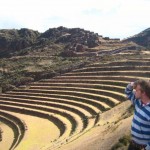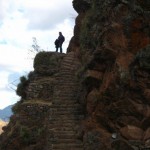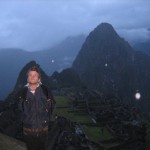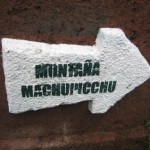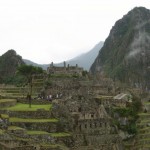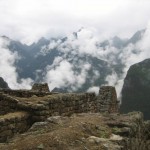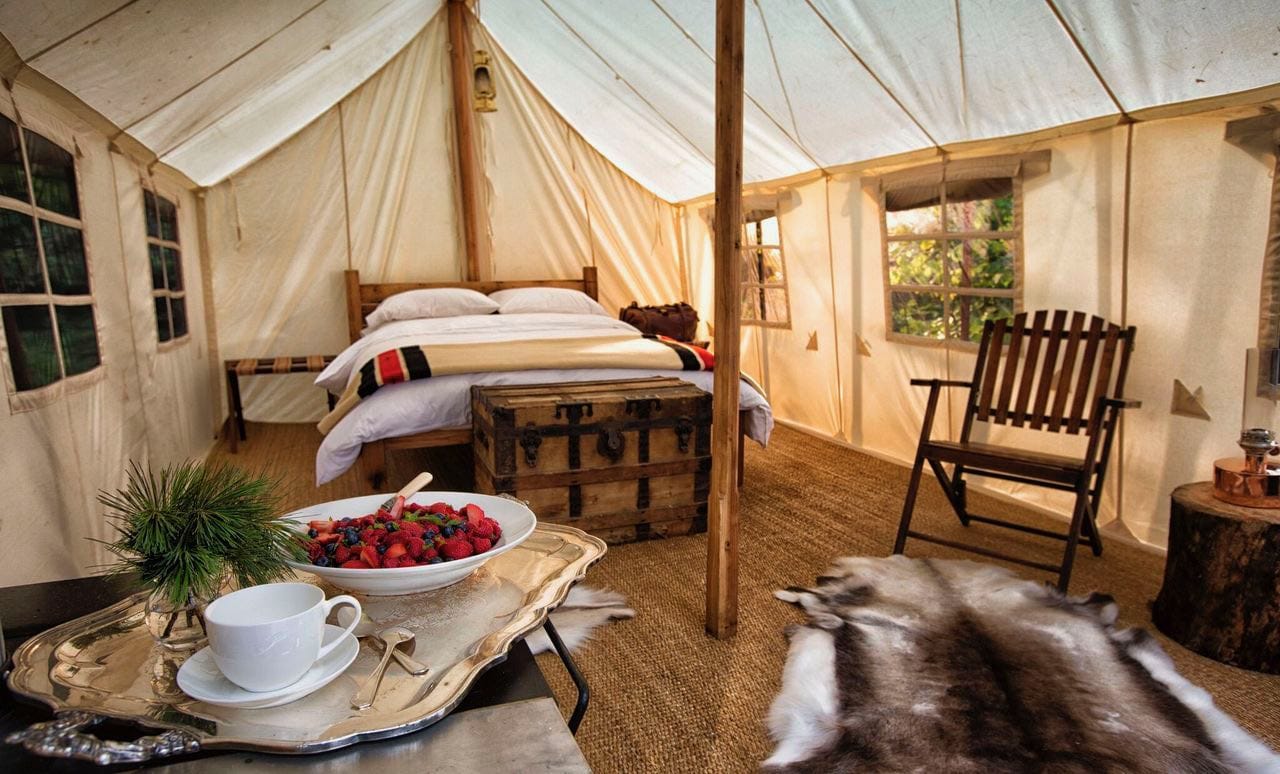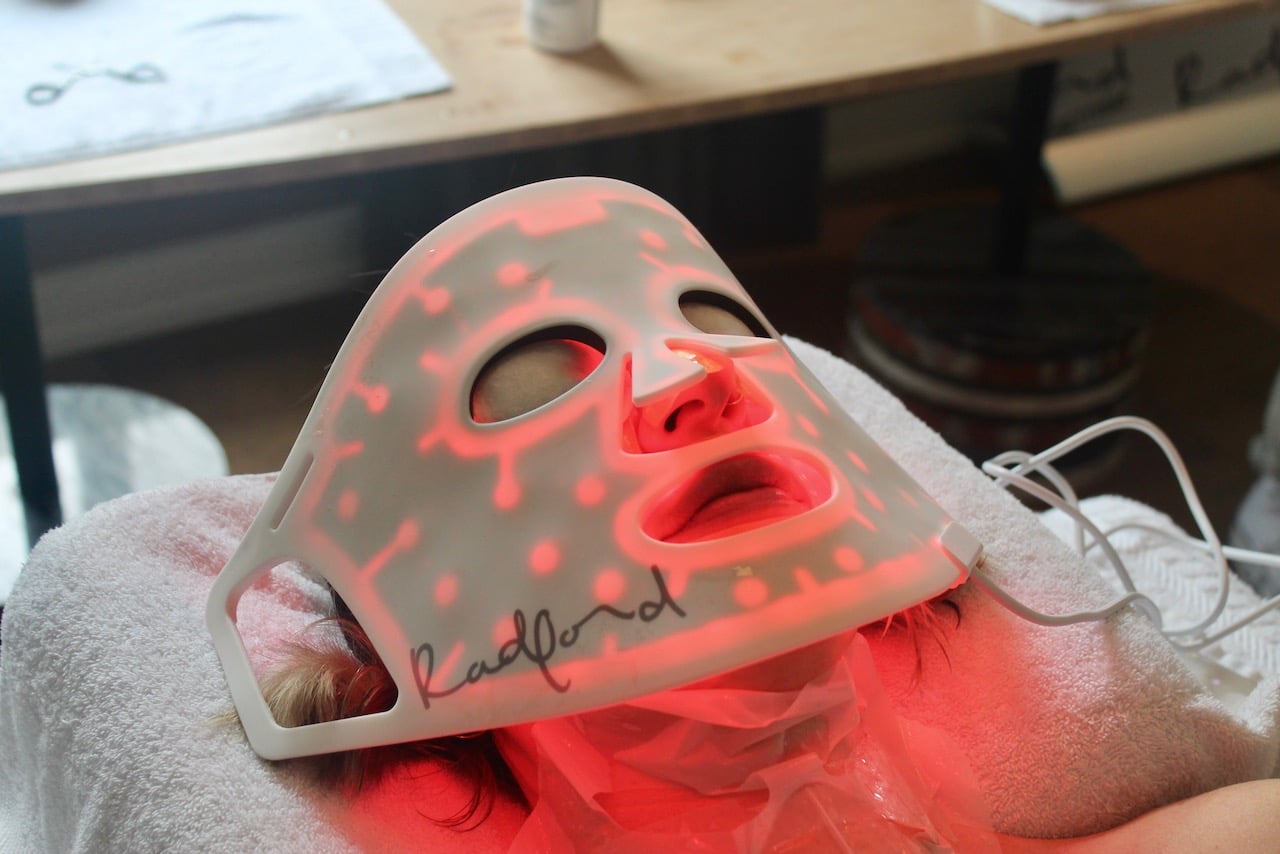Our taxi stopped on the side of the street in a shady little part of town. Directly to our left was the small local transit bus station. We paid 50 cents each to take a one hour bus to the town of Pisac. The one hour drive was a feast for the eyes. We were now rolling through Peru´s Sacred Valley. A thousand year old famed Incan pilgrimage site that includes several cliff top citadels and villages. As we drove along the dirt road I had butterflies in my stomach as I knew we would be taking the train to Agues Calientes in the evening and finally getting a chance to visit the unbelievable Sanctuary of Machu Picchu (where people have been flocking to visit for hundreds of years). I stared out the window as we zoomed over cliff faces that provided astonishing views of the valley bellow. The valley has a thin and rocky river which passes directly through several small agricultural villages. The huge mountains we were crossing over were covered in lush green and reminded me of the scene in Jurassic Park where the helicopter first lands bellow a pounding waterfall. We were in the middle of no where, jungle, mountain, beauty.
Arriving in the small town of Pisac we decided to skip the two hour hike up to the ruin site as soon as a local man pointed to its location way up on the peak of the mountain directly in front of us. We paid 5 soles each ($1.50) for the taxi to drive us up winding cliffs and through street filled goat herds. We finally arrived at the entrance to the ruins and walked along the path towards the peak. My jaw dropped as we walked through the fortress, passing through several stone walled rooms and feasted our eyes on the incredible view. I felt like I was in some sort of National Geographic ¨worlds hidden treasures¨ episode. Or a hilarious Ricola commercial. I walked out onto an ancient Incan patio that looks directly over a huge valley and mountain range. It is not until you really stop and survey the area that you realize how huge this ancient city was. We were standing in the residential area and were staring out at hundreds of grass filled terraces which were used for growing crops. An amazing vista, we could see hundreds of miles into the distance. Past rolling green mountains, clouds and the village of Pisac directly bellow. We started our walk towards the fortresses central village which is somewhat of a hike to get to. We crossed over half of the terraces while huffing and puffing from the altitude. I kept thinking how happy I was that we had decided to take the taxi up here. We sat down for a moment in the blazing sun and I started yammering on about my random craving for an ice cold glass of Pimm’s and Lemonade.
Arriving at the center of the city we crouched under a stone doorway and up through a one meter wide path directly over a sharp and deadly cliff face. I can’t express how overwhelming it is to take in such a beautiful panoramic view while your body is working on half of the oxygen it is used to. We’d stop every few steps to catch our breath, stare out onto the breath taking landscape, literally, breath was taken from our lungs. We scurried along the path and reached the most deadly stair case on earth (according to our own opinions and assessments of course). One of those instances in life where you may regret actually following through with the climb. The staircase had no banister and consisted of huge stone steps built directly into the face of the cliff. Like any idiots we decided we must climb to the top. We climbed the first step and I noticed a scribble of red paint on the rock to the right that read “slowly.” Thanks for the warning. Once we had finally climbed to the top of the staircase we leaned against the cliff wall and tried not to look directly down. The top of the stairs consists of an area roughly two square meters. We both decided we had taken in enough of the incredible view and started to inch towards the stairs to get back down. This is when looking down became necessary. Sarah had to get down on her butt and slide down the staircase as it was so steep and death inducing. Lesson of the day; only walk up what seems easy to walk down. I mumbled how this place would be a terrible vacation for anyone with a fear of heights. Actually come to think of it, if you have any fear of heights what so ever don’t even visit Peru or Bolivia. Skip.
After we recovered from our short bout of vertigo we walked back down the path where I practically broke my ankle on one of the many loose rocks (this place is far from well maintained and groomed). We had to be at the bottom of the fortress in ten minutes so we rushed across a set of agricultural terraces while the long grasses scratched our ankles. We both passed the time discussing the probability that either of us have a remote trace of Incan blood. I became well aware of a small little green bush which features lovely little syringe like needle ends. We made it to the taxi just in time for our ride back into the town of Pisac. We drove past several road side residences and stopped for several goats to cross the street. Arriving in Pisac we were fortunate enough to actually drive up right behind a parade. Everyone was dressed in traditional Peruvian festival gear which includes rainbow jump suits and long nosed monkey masks.
We hopped on another bus to the small town of Umbamba where we jumped into a small collectivo van for Ollantayambo. We were fortunate to pass the bus just as the door opened so we actually sat down for the one hour ride. The collectivo cost 20 cents each and remains the most intimate public transit journey for me to date. Five girls were standing in the small little aisle of the van bracing themselves for any sudden impacts. They stood hunched over, incredibly uncomfortable. Our bench faced another bench and I found myself knocking knees with the people on the other end. Not to mention, a woman fell right into my lap when we went over a boulder. Fantastic.
Arriving in Ollantayambo´s small central square we walked around looking for a decent place to eat dinner before our train to Agues Calientes. Ollantayambo is famous for its cliff side fortress which was built by the same Incan King who planned the construction of the Citadel of Machu Picchu. I stood up on a park bench and stared up at the mountain directly in front of me. I still can´t get over that hundreds of years ago, without any help of modern machinery, the Inca´s were able to build such incredible structures. The fortress here in Olla´ (what the locals use as a short form) is pretty much hanging on the side of a cliff. I am more and more certain that these ¨ruins¨ were in fact constructed recently by the Peruvian tourism commission to attract tourists.
We ate dinner at a fantastic little restaurant called Hearts Cafe. The concept of the eatery makes you feel all warm and toasty inside. We were greeted by an old man from NYC who sat us down and explained the concept. All of the profits of this restaurant are spread across six villages which make up the poorest communities of the Sacred Valley. Money raised is given to impoverished children and broken families. The restaurant kitchen and front of house is run by members of these poor communities who want to get involved in the project and at the same time improve their English and gain new skills in the kitchen. One page of the menu is dedicated to acknowledging people who had helped make this project possible. Almost all of the items on the menu were recipes shared and often times taught to the back of house employees. The page lists items such as Muffin recipe from Montreal, Pancakes from Seattle etc… I simply fell in love with the concept of creating a restaurant for charity which allows tourists to give back in a meaningful way. Whether practically teaching a gringo recipe favorite or volunteering time and money for the cause. As we scanned the menu I felt more and more sure that I needed to buy a copious amount of food. You know, to support the cause, and my belly. I ordered a sandwich with hummus, black olives, avocado, onion, roast tomato and chicken breast. We both shared a slice of Banoffi Pie (courtesy of Boston) and a few chocolate chip cookies for the road. I started reading the novel Confessions of a Shopoholic which made me a bit paranoid about spending any of my money.
By the time we finished up at Hearts Cafe the night sky had drawn itself over the city. Sparkling stars and a crescent moon lit our way along the ten minute walk to the Olla´ train station. Arriving at the station it was packed like a can of sardines. On either side of the walkway vendors shout out random items they are selling on their trolley. ¨Snickers, Pringles, Agua…you need, you buy!¨ Our train slowly chugged along the line and screeched to a halt. In a matter of moments hundreds of locals rushed out of the train, pushing through the likes of us tourists. I turned around to see what all the commotion was about and realized that they all run right off the train to the buses down the road in order to ensure that they have a ride home. A throng of Peruvian military men walked by with huge machine guns as we slowly crept closer in line to the train station entrance.
A man finally opened up the gate and we walked out onto the platform. Each train car had a big giant letter hanging from its entrance door. We were seated in car A so we poked our elbows out and prodded the gringo crowd to get ourselves onto the train. Once we hopped onto the Machu Pichu train we realized how dark it was inside. Pitch black actually. Train attendants wore pin stripe suits. They walk up and down the aisles with flashlights helping you find your seat. We plopped down on our bench and tried to find our iPods with the help of a faint flicker from the lamp outside. Sitting down I took a moment to realize I was a bit stunned. I felt like I was getting on the Hogwarts Express. Getting on the Machu Picchu train at night really is a bit magical. The ambiance is fantastic. Little dressed up conductor men, an antique train car, and a raging river to our right with a glowing crescent moon as our beacon. The train finally started to chug down the tracks heading to the small town of Aguas Calientes (home base for all Machu Picchu visits). During the two hour trip we lurched and tossed back and forth. The train car stopped several times for ten or more minutes. At home I would have been worried. In South America a minor breakdown is commonplace. I stared down the hall of our train car. All I could see were snuggling couples and the faint glow of iPod and cell phone screens. I walked to the washroom. Well not really walked. It was more like bracing yourself as you gracefully fall. Once in the washroom I poked my head out the window and stared out into the star filled sky above. I could see the river directly bellow and decided to return to my seat after getting bushwhacked by several jungle branches. For the next hour or so I plugged myself into Hot Chips, The Warning album and dozed off.
A sudden screech woke me up. We had arrived in gringo-ville. Aguas Calientes, translates into ¨hot water.¨ This town at the base of Machu Pichu has a hot spring located just north of here which flows, steaming, down the river. We jumped down from the train onto the platform bellow just after 10pm. Arriving in Aguas Calientes was a magical moment for me as it seemed like such a fairy tale village. Directly situated on a steaming river, surrounded by jungle. The town is lined with cobble stone streets which have a soft moss growing on them from the mist and frequent rain the valley receives each day. If someone had drugged me and I had woken up on the train platform in the middle of town I would have surely thought I was standing in line for one of those incredibly ambiance rich Disney rides. In a flash the street was full of gringos being yelled at by locals who were trying to sell hotel rooms. We avoided these chirpers and walked to the square in the center of town. The moon glinted across a huge silver statue of an Incan King with his arms outstretched. Welcoming us to Machu Pichu. The town is incredibly easy to navigate. We followed a sea of tourists who all walked up the main full of bars, fancy restaurants and hundreds of hostels. We tried not to get lost in the massive swarm of gringo. The street finally started to thin out as tourists walked down side streets to inquire about room vacancy’s. A short lady came up to us and told us she had a nice hotel for a reasonable price. She showed us our room, we brushed our teeth, plopped into bed and set our alarm for an excruciatingly painful 4:30am wake up!
4:30am doesn’t feel that early when you have goosebumps all over your body from sheer adrenaline excitement. We jumped right out of our beds and power walked down the street to the ticket office. We were a bit upset that it was raining out. We were surely going to get soaked today. Adds a little to the experience I think. In order to get the best out of your Machu Pichu experience it is crucial that you wake up at this ungodly hour. The ticket office opens at 5am. By 5am the line is painfully long so get there early. We were not at all shocked that the one ticket agent had zero change. A couple of annoying American tourists started complaining about her inability to give them the correct change. We rolled our eyes. It really is idiotic that one of the seven wonders of the world has a ticket office without any change. After we grabbed our tickets (which ring in at 20 USD for students) we rushed past the main square to the Machu Pichu bus station. The line at 5:10am was way longer than we had ever anticipated. I lined up in the bus queue while Sarah lined up in another outrageously long line to buy our return bus tickets for 12 USD each! Certainly the most expensive bus we have taken in all of South America. There was soon a huge confusion over which line was for the bus and which was for the line up to buy tickets for the bus. I had to bite my lip to prevent myself from laughing as a crazed woman from the southern States started ranting to her tour guide, Enrique about the unorganized nature of the bus situation.
By 5:29am the street was full of hundreds of tourists trying to inch their way onto the jam packed sidewalk to avoid getting soaked in the rain. Like clock work, at 5:30am, something out of a movie, twelve luxury tourist buses drove past. They returned a moment later after turning around down the road. I was astonished at how quickly the buses filled up and took off with people. They may not have change at the ticket office but they do have an army of bus attendants who rush these buses up to Machu Picchu all day long with incredible efficiency. They have it down to a science. The first bus filled up with people and was actually roaring up the muddy street with tourists still standing in the aisles. We grabbed a seat at the back of the second bus and were soon zooming up a winding cliff through the jungle. All I could do was stare out the front of the bus with its swishing window wipers and bright headlights as I fell into a trance from the dizzy nature of the ride. Every few seconds our bus would take another hair pin curve. We spent the next twenty minutes criss-crossing the mountain to the entrance of the Machu Picchu Sanctuary. We stepped out of our bus in the pitch black. I whipped my hood over my head as my hair was soon dripping in rain water. We walked up to the entrance gates, waited in the pouring rain for five minutes and then pushed through as an attendant ripped our ticket.
Before I fill you in on all the details of our experience I thought I would fill you in on some of the facts that I was given on my entrance brochure. Hiram Bingham, North American researcher and explorer rediscovered this lost Incan site in the year 1900. Accompanied by Sergeant Carrasco as his translator, he started his journey in Cuzco through the Sacred Valley of the Incas, and following the direction of the Urubamba river, they arrived to a place called Mandorpampa in the Hacienda Cutija. There they met a farmer who received a tip of one coin and gave them the information about the existence of some ruins at the top of the “Old Mountain.” When they arrived, they found two local farm families who grew crops on some of the terraces of the lower portion of the eastern part of the city. Precisely it was a child, the son of one of the families, who led them into the archaeological remains. On July 24th 1911 they first arrived to the Royal Tomb, then the Principal Temple and at last, to the Temple of the Three Windows. Since then, this date is known as the Day of the Scientific Discovery of Machu Picchu. The local farmers called the mountain, Machu Picchu, which means, Old Mountain. In 1912 Bingham organized a new expedition with specialists in osteology, natural science, excavations and surveying to explore and to work in the clearing of rubble for research purposes. Yale University along with National Geographic sponsored the teams work. Late on the Peruvian government assumed the conservation of Machu Picchu through the National Institute of Culture Cuzco which is the official entity in charge of the conservation of this Peruvian Cultural Patrimony.
We were the first people to walk through that gate that morning at around 6am, just before the sun rose. We had to creep along a cliff side path which had views that made my jaw drop to the extent that my chin crashed onto my toes. Imagine standing amongst a mystic fog which is grips the surrounding mountain range like a bird trapped in a cage. The rain was pouring, the old man was snoring, and we were climbing through puddles of fresh rainforest water to the entrance of the archaeological site. The most impressive aspect of Machu Picchu is not the Incan Citadel but rather its unbelievable situation amongst the surrounding mountain range. Imagine placing a pebble inside an empty glass fish bowl. The pebble is Machu Picchu. Imagine standing on that pebble and staring up at the 360 degree view of mountains covered in lush jungle. As we continued to walk up the path I tried to pinch myself in hopes that I would absorb every detail and moment of the space. It was still dark out and as we reached the end of the path we could see little lights flickering along the mountain side and soon realized that they were tourist buses making their way up to the entrance.
Totally unprepared, I turned the corner, and we were suddenly standing on a slab rock platform overlooking the entire city of Machu Picchu! You’d think they would post a sign that said “get ready here it comes.” But no, you literally turn a corner and it is there for your eyes to feast on. All of a sudden I was full of energy. Sarah and I started madly taking pictures as the rain poured down on us. Most people would be rather livid that they had traveled all the way here to get rained on. I was ever so excited to be soaking wet as the morning rain and cloud cover allows for great moody photographic opportunities. We decided to walk all the way up Machu Picchu’s staircase to the highest agricultural terrace in order to get the best view of the city before all of the tourists showed up. We both chatted about how Machu Picchu was a lot like Italy, it fulfilled and exceeded our expectations entirely. This morning, at Machu Picchu truly was one of the only times in my life that I have been at a loss for words. By the time we reached the highest agricultural terrace the rain had stopped, the clouds had started to rise and we could see the city bellow with great clarity. We walked to the edge of the terrace and poked our heads over the edge. Once again I would like to reiterate that Peru is not a great vacation spot for those who are terrified of heights. We were staring over the terrace and looking directly down the mountain at the crashing river bellow and jagged rocks directly beneath. One does not expect the Peruvian government to place ropes or safety nets around these troublesome, life threatening areas. If you ever come here with small children, staple them to your arm or you may find them hanging from a rock 500 meters bellow you, decapitated on a jagged cliff.
Sarah decided to take a walk up a rather arduous and dangerous path to the Inca Bridge. I stayed back and did a bit of journaling while listening to the jungle birds that fluttered around me. I stared out at the famous Waynapicchu mountain which is featured in every picture anyone ever sees of this Seven Wonder of the World. Only 400 people are allowed to climb Waynapicchu each day. These people are all crazy and suicidal if you ask me. You can spot colourful little dots rising along the side of this mountain. These dots are crazy tourists trying to climb the ancient (aka incredibly dangerous) stone staircase to the peak. Going up, one must always come down. We heard several tour guides advising members of their groups to avoid the climb. One cannot fully understand the danger of this hike unless they actually see it for themselves. We had heard many tourists fall off the cliff, break their hands, legs, heads…basically people come back black and blue. Seeing that we didn’t want to die, and the stairs were covered in moss and slippery water from the morning rain we decided to sit together and mock the colourful little dots climbing up Wayna. We both leaned against a huge boulder and ran off in our heads the amazing things we have seen on this trip: the beautiful glacier in El Calafate Argentina, Iguazu Falls on the border of Argentina and Brazil, the Salt Flats and Amazon Jungle Basin in Bolivia and now, Peru’s Machu Pichu. I screamed bloody murder as I saw a huge black and red ant the size of a cockroach on Sarah’s shoulder. We decided not to lean on any more boulders, and started to climb down to the ruins.
Suddenly we realized the park was incredibly busy. It was now around 9am and all of the Inca Trail groups were filtering into the Lost City. We wound around the cliff face of a mountain and discovered that Machu Picchu is far larger than you would imagine. Hundreds of green grass covered agricultural terraces are located on both sides of the mountain. We stared out onto a rather odd looking mountain that had a peak which looked somewhat like a shark fin. We walked down a set of steep stairs and found ourselves standing amongst a herd of grazing Llama’s. We arrived back at the jungle path and walked towards the entrance of the ruins when I noticed several tiny maintenance workers. One of the men had a small brush and was dusting the leaves and dirt out of the cobblestone pathway. Another man had a long broom which he used to clean the path of any debris. These workers are located throughout the grounds and make the Machu Picchu experience immaculate, pristine and clean.
We entered the city from the Qolqas Storage houses and walked along the several circular watch towers towards one of the cities many water fountains. The paths and stairs throughout the city are outfitted with an advanced plumbing system. Small canals about half a foot in diameter are located on each side of the cities paths. The Inca’s were rather brilliant. They avoided having to carry water across the city by developing this system of waterways and fountains. We walked down to the famed Temple of the Condor, past the Royal enclosures and into the main square. The square consists of a rectangular football size field covered in manicured grass. We walked in front of Waynapicchu, past the West Agricultural zone and up onto the highest view from within the city. The Astronomical observatory is the most sacred places in all of Machu Picchu. It reminded me a bit of the Gallery de Academia in Florence which is full of attendants who scream at you if you take a picture of the David. A rather obtuse looking structure is surrounded by a railing. If one touches the railing they are yelled at by one of the many attendants who keep close watch. Apparently a beer commercial was filmed here and the crew wacked into the structure and broke a piece off! Since then they have been very protective of this part of the City. The observatory is where all sacrifices to the gods were made. People would travel for weeks, even months, from across South America to Machu Picchu with the sole purpose of bringing sacrifices and offering to this very platform. Standing at the highest point within the city you can really appreciate the size of Machu Picchu (the agricultural terraces which surround the city surround you on all sides).
We walked back down through the many empty rooms of the city and laughed about how fun it would be to play hide and seek here. Machu Picchu would have to be the best place on earth to play an ultimate game of hide and seek, even laser tag would be thrilling. We walked through several incredibly tiny one foot wide corridors. No place for claustrophobia. The amount of exercise you get from hiking up and down the fortress of Machu Picchu toppled with the effect of high altitude on your breathing…lets just say one pants and a lot. After five hours we decided to grab the bus back to Aguas Calientes. We had seen every square inch of Machu Picchu and as I sat down at the back of the bus I still felt a bit dizzied by the impact of the experience.
The drive back to Aguas Calientes was fantastic. The drive up at 5:30am was pitch black so we didn’t get a chance to appreciate how beautiful the scenery was. We slid down a huge gorge and arrived at the crashing steam river bellow. We were starving. We sat down at Restaurant Apus and sipped on our free Pisco Sour. We both ordered a bowl of pumpkin soup and deep fried chicken with garlic cream and rice. This restaurant proved to be somewhat of a nightmare however. Our first minor issue was that our deep fried chicken was bleeding. We told them we refused to eat it. They grabbed our plates and threw our chicken back in the deep fryer. We were then given the bill and noticed a rather staggering 20% mandatory tip included in our total. This is the first and only time in South America where we were ever forced to pay a tip. More shocking was the 20% figure, that’s like asking someone to pay 60% tip on a restaurant bill in Canada. We were pissed. We handed over our VISA and waited to sign our receipt. The waiter scurries table side and says we can’t use VISA we have to pay cash. I sat up straight and informed him that we could have eaten at any of the other lovely restaurants on the street that had taken VISA. I informed him that we had no cash. We also refused to take money out of an ATM. His boss comes over and tells us that they don’t usually “use VISA,” and that she would have to add a 10% fee for using her machine. I was livid at this point because I knew she was lying to me and there was no way I was paying to use my VISA card. She saw my face and understood my feelings over the matter. You’d think they’d bend over backwards after serving us bloody poultry. After finally signing our VISA bill we walked right back to our hotel and napped for two hours.
We hopped out of bed and made our way over the steaming river which passes through town. On the other side we rummaged through the cities market where we found several odd never before seen items. Card decks featuring pictures of Erotic Incan sculpture could be purchased for a loved one (hint of sarcasm). We saw several stands that sold jungle life encased in glass: pinned butterflies, tarantulas, bats and rodents. We walked over to the square and sucked on ice cream cones while staring up at the mountains above.
In the evening we ate at the town’s swankiest restaurant called Inka Wasi. The restaurant features a central wood burning stove and a beautiful adaptation of Da Vinci’s Last Supper. This version of the Last Supper consists of one huge wood carved panel which features apostles dressed in traditional Incan garb. We both shared a pizza smothered in garlic mayo. After dinner we walked up the street, past our hotel and stood in front of several bars. We were soon being fought over by several bar owners. The first owner offered us 3 for 1 drinks for five dollars. The lady beside her screamed that she’d give us 4 for 1. We were then told that another lady would give us a free plate of nachos and guacamole. I wish restaurants and bars bartered over clients like this back home! We sat down on a big couch, slurped on Cuba Libre’s and played a game of chess. I noticed a few gringos sitting at the back of the bar staring at a TV. We spent the last hour of our Machu Picchu day watching hilarious Borat moments.
We woke up at the ungodly hour of 4:30am (again). In the pitch black we made our way to the train station where we purchased a ticket from Olly to Cuzco and stared at a few vendors selling slices of cake and coca tea. The train slowly screeched to a halt and we hopped into our car and slid into our seats for a three hour journey through the valley. I stared out of the window and noticed a beautiful vortex of clouds hanging in the valley behind us. We spent the next few hours driving along the raging river full of huge boulders. I couldn’t believe the size of some of these huge rocks. They lie scattered across the river and appear to be the size of a two story town house!
We arrived in Olly and were greeted by a thick crowd of men screaming “Cuzco, taxi, Cuzco!” We walked up and down the road looking for the bus company on our ticket. Someone told us it had already left. Literally in under two minutes the buses were taking off. They don’t wait around for anyone around here. We jumped on a bus just as it was scooting out of the parking lot. We grabbed the last two seats and plopped ourselves down before the bus left in a puff of smoke.
I was fortunate enough to sit beside a rather interesting gentleman. I was sitting beside a VIP Machu Picchu Tour Guide. He is the go to man if you are wealthy, a celebrity or any form of royalty. He has a five year degree in Incan Culture and Archaeology. We had been told several times on our trip (and saw in the newspapers) that Cameron Diaz and Bill Gates had visited Cuzco and Machu Picchu this summer. Low and behold, the man I was sitting beside had been their tour guides. He has toured the princess of Sweden, Saudi Oil Tycoons and the richest man in the world (a short computer geek from Seattle). I thought I should take advantage of the free information at my disposal and ended up spending the one hour trip back to Cuzco listening to this mans stories of the Incan culture. He told me that Machu Picchu was built over 500 years ago. As we puttered back into the suburbs of Cuzco I still couldn’t believe that I had spent the previous day sauntering across a 500 year old lost Incan city. Spectacular life moments.

